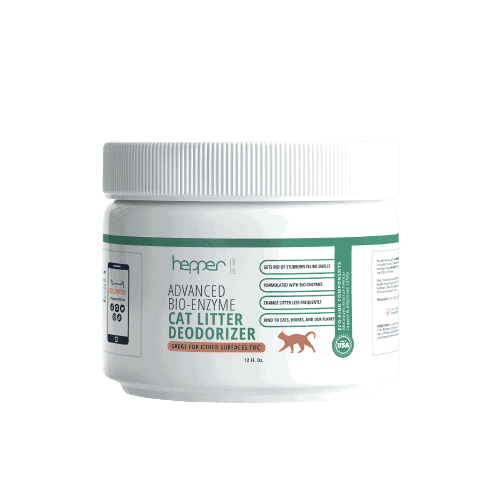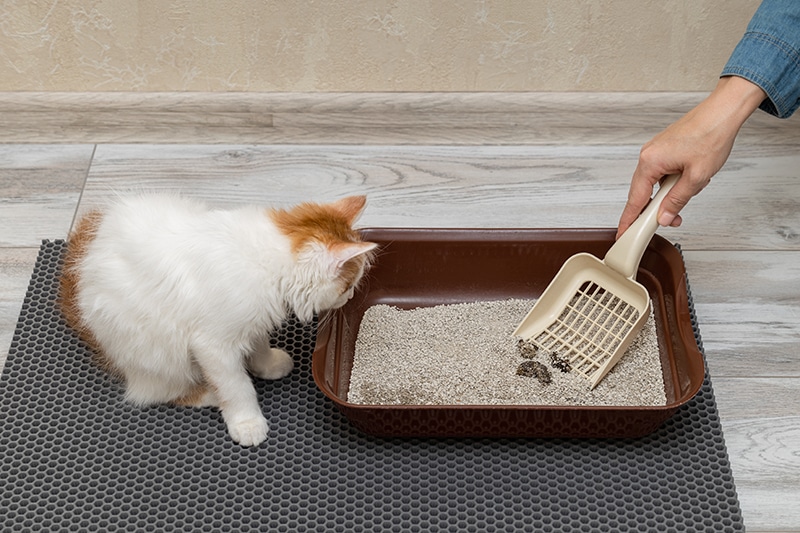
Have you ever cleaned your litter box only to find that it still smells? In traditional plastic litter boxes, the smell of ammonia can soak into the litter box, making it smell worse over time. Luckily, disposable litter boxes can help prevent this problem and make your home smell a bit better as a result. They are also great options for traveling.
However, not just any disposable litter box will do. If you want your home (or hotel) to truly smell better, you need the best disposable litter box.
Below, you’ll find our reviews of the top 10 disposable litter boxes available.
A Quick Comparison of Our Favorites in 2024
| Image | Product | Details | ||
|---|---|---|---|---|
| Best Overall |

|
Kitty Sift Disposable Cat Litter Box |
|
CHECK PRICE |
| Best Value |
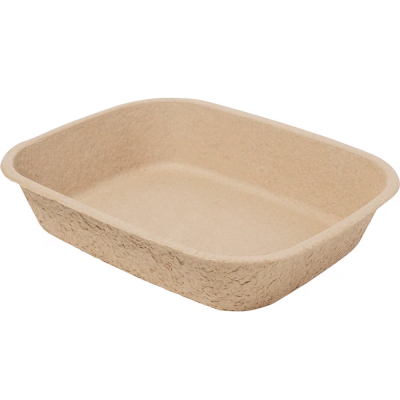
|
Frisco Disposable Litter Box |
|
CHECK PRICE |
| Premium Choice |
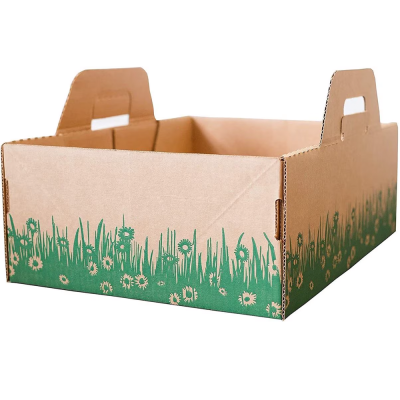
|
Ten-Second Disposable Cat Litter Box |
|
CHECK PRICE |
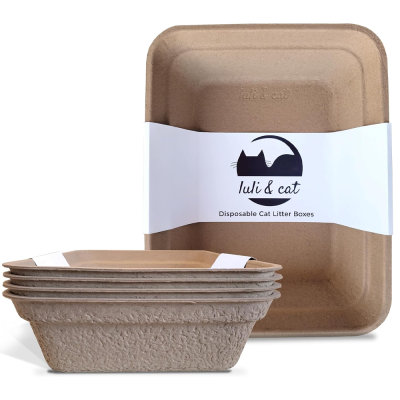
|
Luli & Cat Disposable Litter Boxes for Cats |
|
CHECK PRICE | |
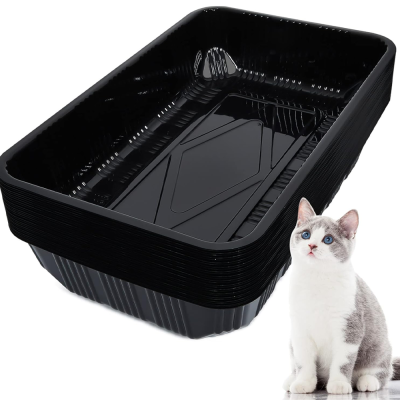
|
Tessco Disposable Litter Boxes for Cats |
|
CHECK PRICE |
The 10 Best Disposable Litter Boxes
1. Kitty Sift Disposable Cat Litter Box – Best Overall
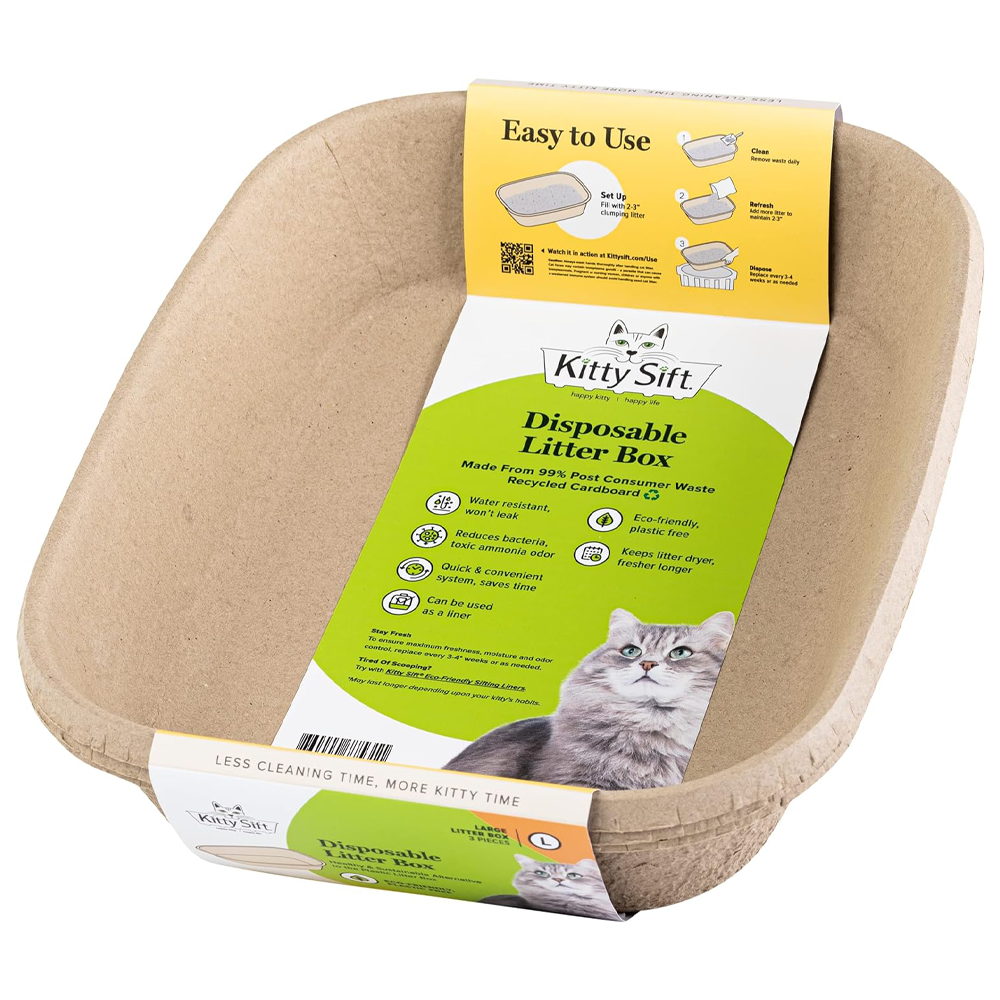
| Litter Boxes in Pack: | 6 |
| Dimensions: | 8” x 20.25” x 5.5” |
The Kitty Sift Disposable Cat Litter Box is the best overall disposable litter box on the market today. It is recycled from post-consumer waste, so you can feel good about using them, too. One of the big obstacles to using disposable litter boxes is creating more waste, so these recycled boxes solve that problem.
These boxes are also made of breathable materials, preventing odors. They can be comfortably placed inside many enclosed litterboxes, too. This works great if you prefer enclosed litter boxes but need a disposable litter box instead. Thanks to the coating, this box won’t break down or leak with water.
Based on customer reports, these boxes last about three weeks each before they begin to peel and break down.
- Recycled materials
- Comes with several in a pack
- Breathable to prevent odors
- Waterproof to prevent leaks
- Peels after a few weeks
2. Frisco Disposable Litter Box – Best Value
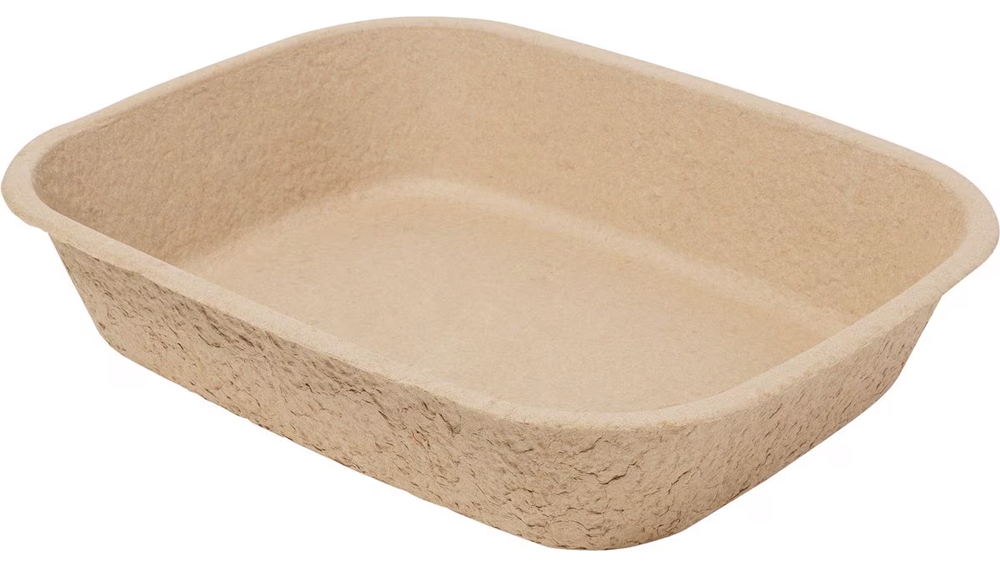
| Litter Boxes in Pack: | 6 |
| Dimensions: | 78” x 13” x 4” |
If you’re looking for the cheapest option that still works, we recommend the Frisco disposable litter boxes. These come to a very low price for each when you purchase the six-pack, making them one of the best disposable litter boxes for the money. Of course, your costs will be higher if you purchase a pack with fewer litter boxes in them.
These boxes are made from recycled cardboard that has a plastic lining. Therefore, they can withstand water and urine, helping them remain leakproof. They’ll also be large enough for most multi-cat households, though they are smaller than our overall pick.
That said, several users reported that these litter boxes are clearly disposable and don’t last more than 2 weeks. That’s less usage than you’d get out of our top pick but still about average for most disposable litter boxes.
- Leakproof
- Inexpensive
- Eco-friendly
- Large enough for multiple cats
- Not exceptionally durable
3. Ten-Second Disposable Cat Litter Box – Premium Choice
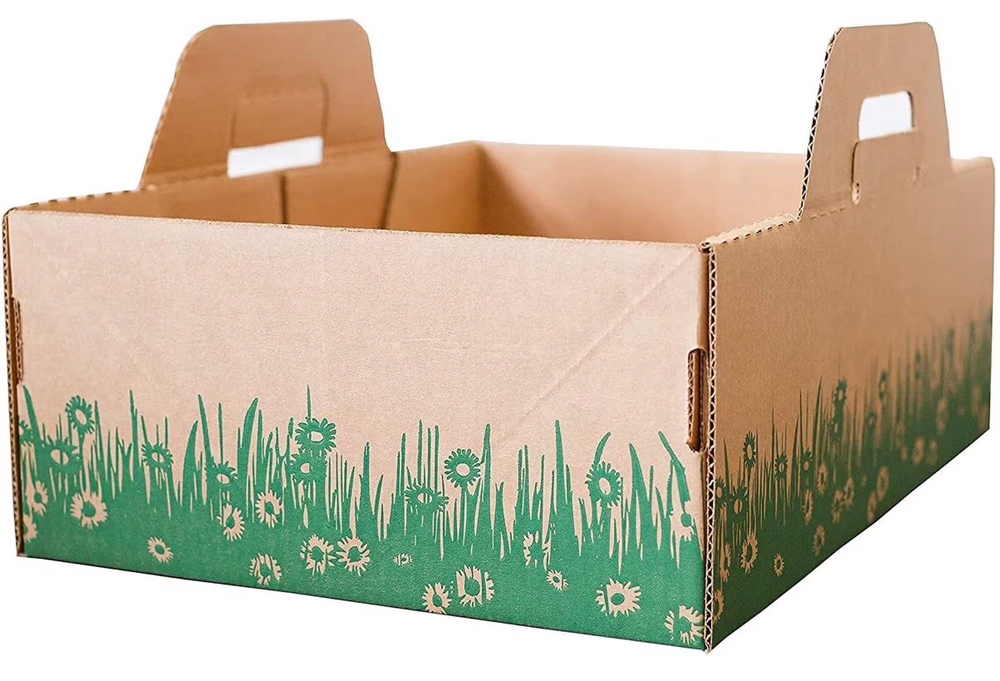
| Litter Boxes in Pack: | 5 |
| Dimensions: | 18” x 14” x 6” |
If you want a disposable litter box that’s a little sturdier, we highly recommend the Ten Second Disposable Cat Litter Box. This litter box just has a bit more structure to it, though you will pay a bit extra for all the added material.
Luckily, this litter box is biodegradable, so you don’t have to feel bad about choosing it over smaller options. It is made from plant-based, compostable materials. Many reviewers also reported that this box is surprisingly leakproof, even for cats that tend to go in the same spot over and over again. If you’re looking to decrease accidents, this box is a solid choice.
The biggest drawback to this litter box is the cost. Compared to traditional litter boxes and other disposable options, it simply costs more.
- Leakproof
- Sturdy
- Completely disposable
- Several litterboxes included
- Expensive
4. Luli & Cat Disposable Litter Boxes for Cats
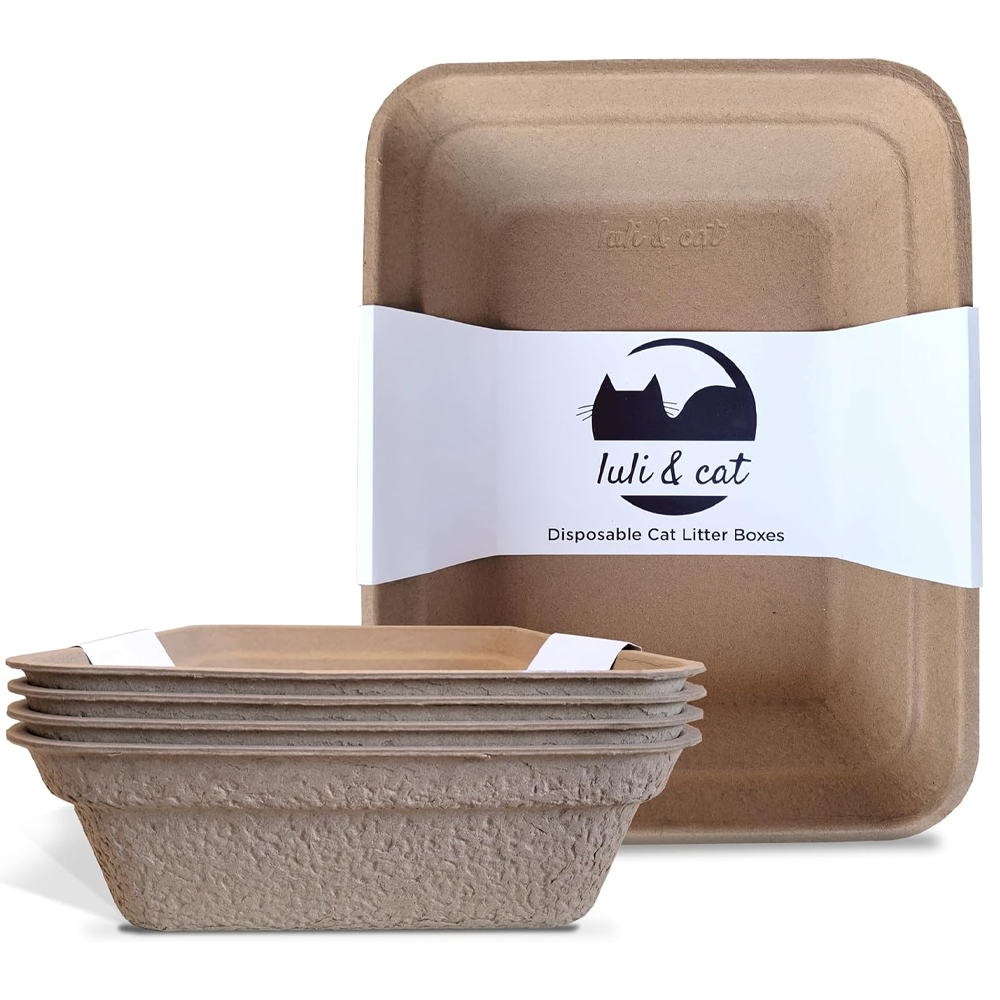
| Litter Boxes in Pack: | 4 |
| Dimensions: | 17” x 13” x 4.5” |
The Luli & Cat Disposable Litter Boxes are well-designed and long-lasting. If you keep around 3 to 4 inches of litter and scoop out the box regularly, one disposable box can last for up to 4 weeks. That’s much longer than many other options out there.
This box is also much sturdier than other options, though it isn’t as sturdy as a traditional litterbox. It is water-resistant, which is absolutely necessary for disposable litter boxes. Many users reported that these boxes are a nice size. They’re big enough for multi-cat households without being exceptionally large.
Generally, most agree that this is one of the better disposable litter boxes out there. However, it is more expensive than most other options.
- Water-resistant
- Long-lasting
- Good size
- Not as eco-friendly as other options
5. Tessco Disposable Litter Boxes for Cats
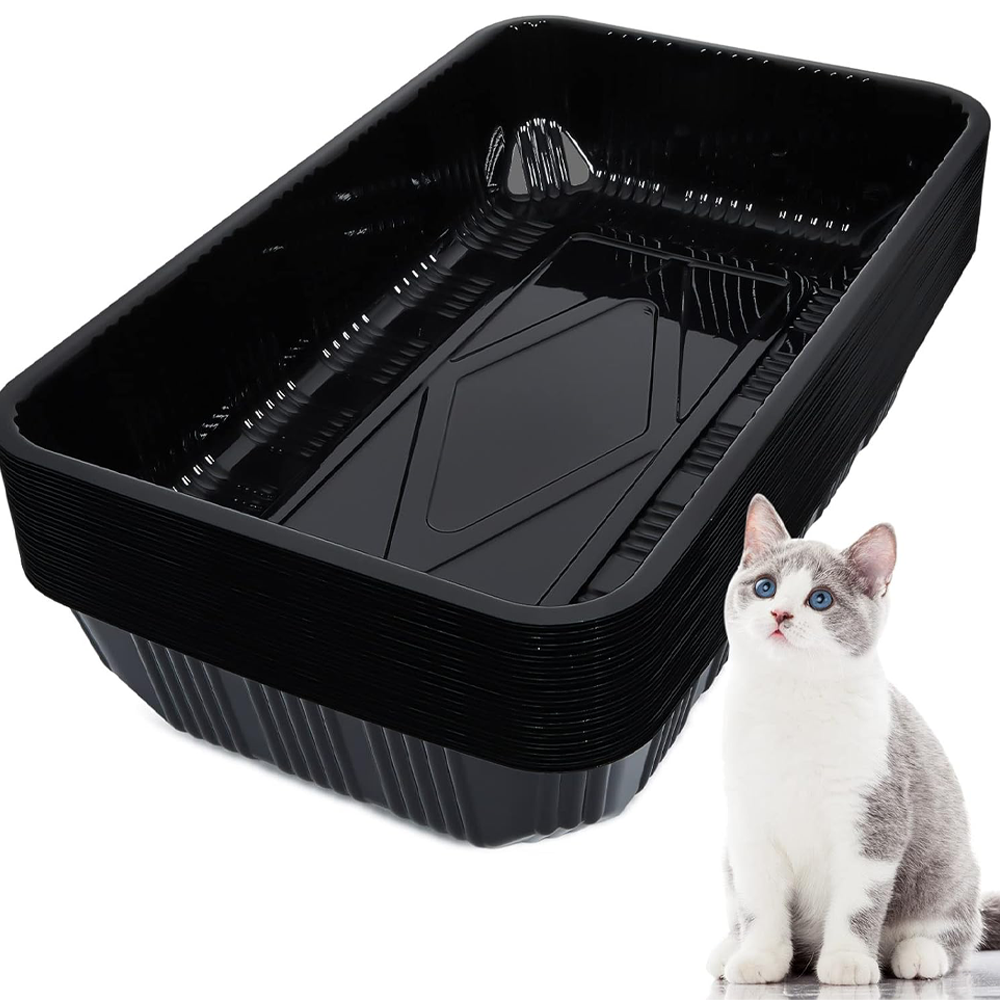
| Litter Boxes in Pack: | 30 |
| Dimensions: | 7” x 10.5” x 3.4” |
Unlike most litter boxes out there, this litter box is made out of plastic. Therefore, they are exceedingly waterproof and tend to last longer. In fact, they can last a very long time if you take care of the litter properly. However, they aren’t very eco-friendly, which is why they are lower down on the list.
Furthermore, the company recommends changing the litter box every 2 weeks. Therefore, they last less time than many of the paper options above. (That said, many reviewers didn’t seem to follow this guideline and reported that their litterboxes lasted much longer.)
This litter box is also much smaller than others. So, it works better for smaller cats. It isn’t one we’d recommend for a Maine Coon or similar breed.
- Completely waterproof
- Inexpensive
- Extremely large pack
- Not eco-friendly
- Smaller than other boxes
6. NDSWKR 8 Pack Disposable Cat Litter Box
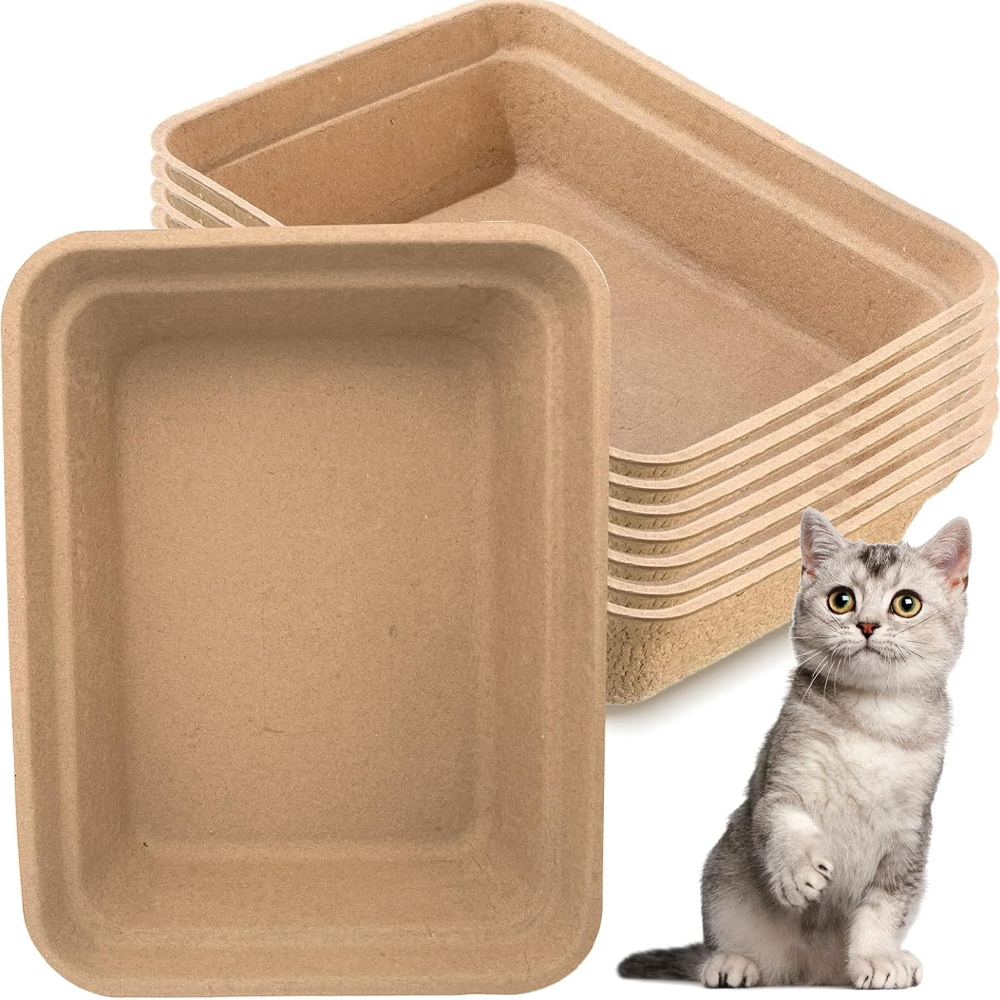
| Litter Boxes in Pack: | 8 |
| Dimensions: | 17” x 13.3” x 4” |
The NDSWKR 8-Pack Disposable Cat Litter Box is exceptionally similar to all the other paper disposable litter boxes you’ll find on the market. They’re also priced about average, so you won’t be saving tons of money with these, either.
However, they do work. They’re waterproof and made to biodegrade, so you can feel okay using them. They’re made from paper-board, making them decently sturdy and safe for practically all pets. They’re pretty lightweight, though it isn’t any less sturdy than other disposable litter boxes on the market.
The material is covered in plastic to be water-resistant. Therefore, it won’t leak with normal usage, even in multi-cat households. That said, we only recommend these boxes for small to medium cats. Larger cats will be far too big for these boxes, and you can also find larger boxes for around the same price.
While these boxes are pretty decent, they aren’t amazing and don’t come with any extra features.
- Waterproof
- Biodegradable
- Average price
- No extra features
- Smaller than other boxes
7. ZenKitty Disposable Litter Box
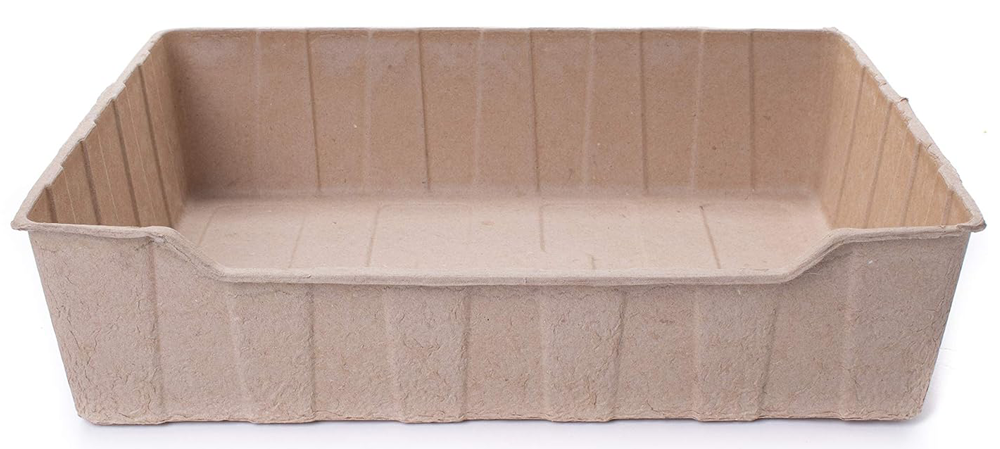
| Litter Boxes in Pack: | 4 |
| Dimensions: | 17” x 13” x 5” |
We like the ZenKitty Disposable Litter Box for several reasons. They’re leakproof thanks to the coating on the paper, and they’re completely biodegradable under most circumstances. They’re also pretty lightweight, though when you add the litter, that does stop being the case.
We love that these last for a month each, which is longer than most other litter boxes out there. However, some users did report that their litter boxes don’t last quite as long as this.
These litter boxes are pretty expensive compared to some others. They may seem cheaper, but they come with very few boxes in a kit—so you’re actually paying more per box. If they lasted the full month as advertised, that may make the extra cost worth it. However, as we’ve already stated, they don’t last this long in most circumstances.
- Biodegradable
- Higher sides
- Leakproof
- Expensive
- Only lasts a couple of weeks
8. Cat Desire Biodegradable & Disposable Litter Box
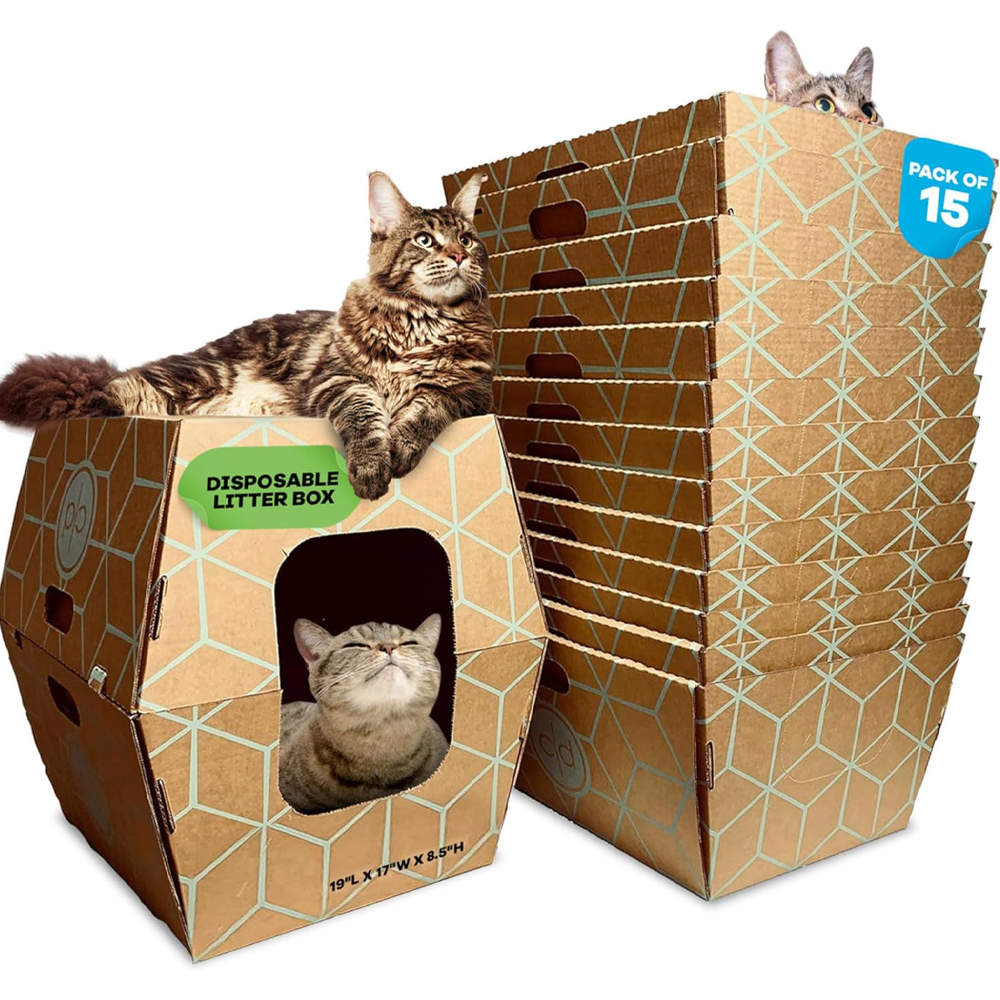
| Litter Boxes in Pack: | 15 |
| Dimensions: | 19” x 17” x 8.5” |
Some cats (and people) prefer a covered litter box. The Cat Desire Biodegradable & Disposable Litter Box is both covered and disposable. Don’t let the price tag scare you away. You’re paying a low price when you purchase the larger bundle, though the price does start going up a lot if you purchase less. You can purchase as few as three at a time, which can be helpful if you don’t have much storage space.
This box also has very high sides, which can be useful for bigger cats. However, smaller cats may have a harder time getting in and out of the box. Plus, scooping it is harder since it is completely covered.
There is an option to use a lower entry for senior cats or kittens, though, partially solving this problem. You can also use it as a plain, open tray. However, if you were going to use it like this, there are other options.
- High sides to prevent tracking
- Large pack for increased savings
- Covered
- Expensive
- High entry point
9. Animaru Disposable Litter Boxes for Cats
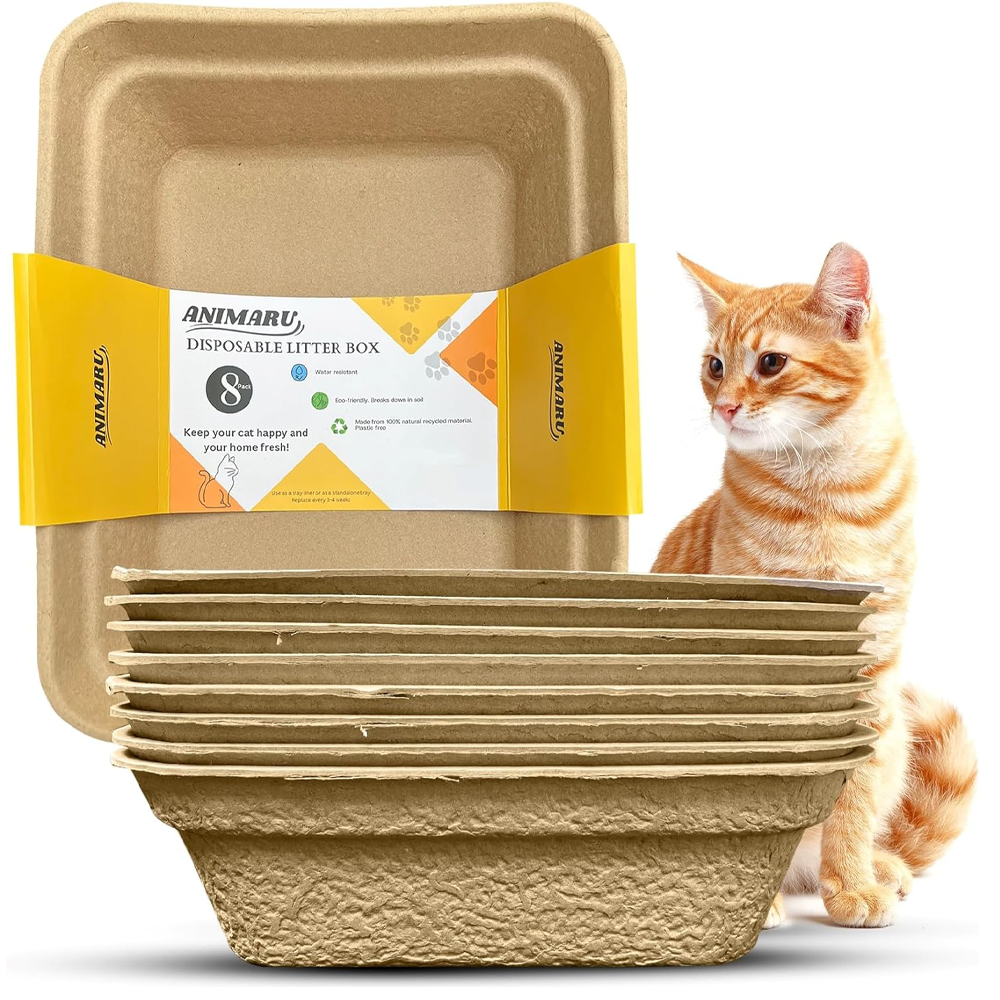
| Litter Boxes in Pack: | 8 |
| Dimensions: | 17” x 13” x 4” |
The Animaru Disposable Litter Boxes for Cats are very similar to other litter boxes on the market. They’re relatively large, allowing you to utilize them for up to the largest cats. We don’t recommend them for Maine Coons or similar breeds, as these felines will simply be too big.
We do love that these boxes are made from 100% recycled paper. Unlike many other options out there, it’s very eco-friendly and should biodegrade quickly after use. The box is decently strong, allowing it to be used with just about any kind of cat litter.
Like most disposable boxes, the waterproof coating helps prevent leaks. However, some leaking was reported by users. We recommend maintaining at least 3 inches of litter at all times to prevent this problem.
- Made from 100% recycled paper
- Quite strong
- Water-resistant coating
- Some leaking reported
- Expensive
10. PETS Disposable Cat Litter Box
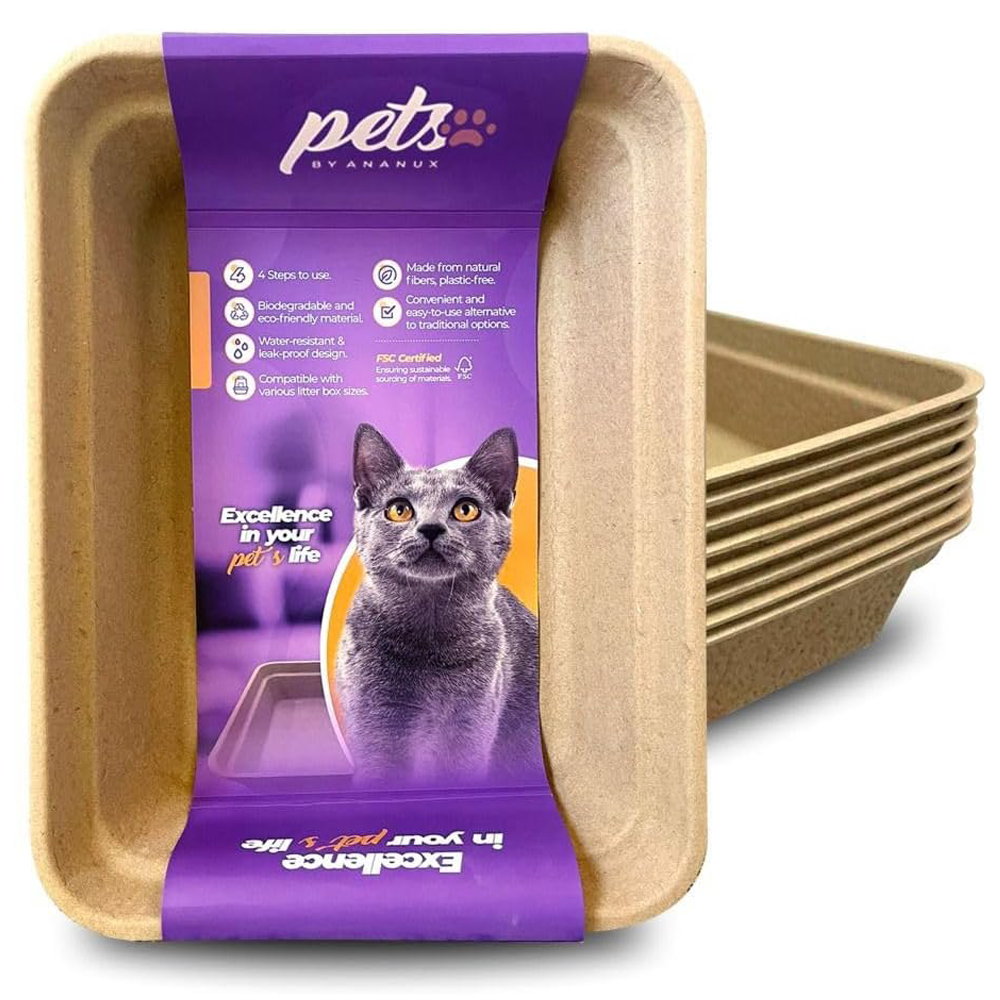
| Litter Boxes in Pack: | 8 |
| Dimensions: | 17” x 13” x 4” |
Finally, we have the PETS Disposable Cat Litter Box. This litter box is exceptionally similar to others on this list. They have the same dimensions as many popular disposable litter boxes, making them suitable for all cats up to the largest ones. The box is designed with thicker paper pulp, preventing it from bending and collapsing when loaded with litter. It works with just about any cat litter, though we recommend using clumping litter to prevent leaks.
According to the company, each box can last for 3–4 weeks, which is about average. These boxes are also averagely priced.
That said, these pans aren’t great for multi-cat households. The urine will seep into the litter box if the litter doesn’t stop it, which can make the box very smelly. It’s only water-resistant—not waterproof. They’re also rather small compared to many boxes rated higher on this list, and they aren’t priced any cheaper.
- Lasts 3–4 weeks
- Made of thick paper
- Moderately priced
- Tends to soak up urine
- Small compared to other boxes
Buyer’s Guide: How to Pick the Best Disposable Litter Box
If you want disposable litter boxes to work for you, choosing the right one is essential. There are tons of options on the market, but it’s important to consider your cat and preferences to select the best disposable litter box for your needs.
In this section, we’ll go over what you need to know when selecting a disposable litter box for your feline:
Size Matters
Cats need enough space to do their “business” in a litter box. You need to ensure that the litter box is just as long as your feline, plus at least 4 inches (6 is better). Larger cats need larger litter boxes, as you might imagine.
However, bigger isn’t always better for smaller cats. They may not utilize the whole litter box, leading to litter waste when it’s time to throw the whole thing out.
Materials Available
There are two main materials available for disposable litter boxes: paper and plastic. The vast majority of boxes are made out of paper, as it’s more eco-friendly. When you’re throwing tons of litter boxes out regularly, it’s important that they’re eco-friendly.
The vast number of boxes we reviewed are paper, as this is simply the most common material. Disposable plastic litter boxes also tend to be extremely thin, which leads to cracking problems.
Odor Control
Some disposable litter boxes have ways to eliminate odors, such as baking soda, fragrances, or charcoal. Sometimes, these methods are high-quality and work well. In other cases, they may not be. If you don’t like smelly fragrances, you probably don’t want to purchase a scented litter box.
That said, regular scooping is the best option for odor control. Disposable litter boxes cannot control the odors by themselves.
Using a disposable litter box isn’t a magic pill for odor control. Yes, disposable litter boxes can eliminate the stink of the actual box after changing the litter. However, regular scooping and box replacement are vital for them to work properly.
Even the best cat litter can quickly start smelling bad. To avoid the expense and inconvenience of constantly replacing your litter, you can try a great litter additive like Hepper's Advanced Bio-Enzyme Cat Litter Deodorizer, a natural product that uses bio-enzymes to neutralize odors.
This deodorizer works on all types of litter and won't disrupt your cat's litter box habits. At Catster, we’ve admired Hepper for many years and decided to take a controlling ownership interest so that we could benefit from the outstanding designs of this cool cat company!
Cost Considerations
Disposable litter boxes provide convenience, but you do have to buy them more often. Therefore, if they are expensive, you may even end up spending lots of money over time. It’s important that the price is low enough for your budget.
However, you often get what you pay for. You don’t want to purchase the cheapest option, as it may not be the best box for your needs. Smaller boxes tend to be cheaper. If you have a larger cat, this may not be the best option. Your cat just wouldn’t be able to use it.
Consider your cat’s needs on top of your budget.

High Sides vs. Low Sides
There are many litter boxes that have high sides and many that have low sides. This feature is probably one of the more important ones you’ll be choosing between. There isn’t a better option for every cat owner, as it depends largely on your feline.
High sides are best at controlling scattered litter. If your cat tends to fling litter when they dig, then the higher sides may prevent some of this flinging. However, seniors and kittens can have a problem with getting into the litter box if the sides are too high. Low sides can also make the litter box more accessible for cats with health problems. Even if your cat isn’t older, arthritis and similar mobility problems can affect their ability to get over higher sides.
You also have to consider your cat’s preference. Some cats prefer shorter sides, while others prefer high sides. Some like the enclosed feeling that high sides provide, while others may feel a bit too closed in.
Cats that like covered litter boxes tend to prefer higher sides, while cats that don’t like enclosed boxes tend to prefer lower sides.
Are Disposable Litter Boxes Worth It?
Disposable litter boxes are worth it if you want to eliminate bacteria build-up and stop cleaning the litter box itself. Disposable litter boxes are also travel-friendly if you’re taking a trip, eliminating the need to carry around a regular litter box.
Many disposable litter boxes are eco-friendly, as they’re usually made from paper. Some are even made with recycled materials, so you don’t have to worry about the constant throwing away of litter boxes hurting the environment.
That said, disposable litter boxes are often more expensive compared to others. You have to keep purchasing them, unlike a traditional litter box. You may also find that heavy clay litter doesn’t work well for disposable litter boxes, and you may be forced to use a clumping option to prevent leaking. You’ll also generate more waste, even if it is biodegradable waste.
It largely depends on whether you’re willing to spend the extra money on a litter box in exchange for convenience.
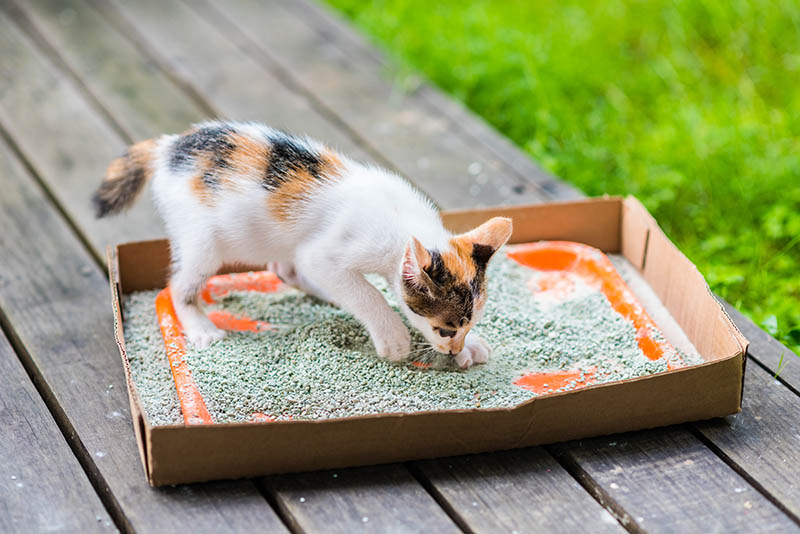
How Often Do You Change a Disposable Litter Box?
You should change a disposable litter box every 3–4 weeks. However, if you have multiple cats, you may need to change it far more often. Cat lovers report that each cat removes about 4 days from a box’s longevity.
Larger boxes tend to last longer than smaller ones, though this isn’t always the case. If your cat only uses one spot in the litter box, then the larger ones may last just as long as the smaller ones. We recommend checking the manufacturer’s recommended changing frequency, which will differ from company to company.
That said, we found that not all companies have very accurate guidelines in this regard, so always use your judgment when determining whether to change it or not.
Clumping litter tends to help the box last a bit longer, too. Non-clumping litter increases the liquid the litter box contacts, lowering its lifespan.
Combating tough cat litter smells is an ongoing battle for pet parents but luckily, there are products out there designed to help! Two products that significantly reduce odors are the Hepper Litter Additive and the Hepper Enzyme Spray. Find out which is better suit to your needs with our breakdown of each product below. At Catster, we’ve admired Hepper for many years and decided to take a controlling ownership interest so that we could benefit from the outstanding designs of this cool cat company!
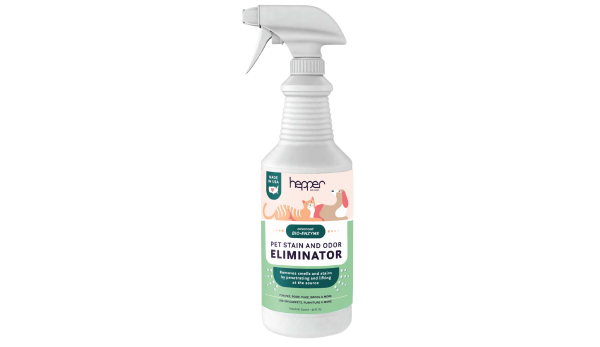
Hepper Advanced Bio-Enzyme Pet Stain & Odor Eliminator Spray
Hepper Advanced Bio-Enzyme Cat Litter Deodorizer Powder
Eliminates smells
Removes stains
Unscented
Light fresh scent
Works on multiple surfaces
Neutralizes odor within cat litter
Final Thoughts
There are tons of disposable litter boxes on the market, but our favorite is the Kitty Sift Disposable Cat Litter Box. This litter box is fairly priced, durable, and made from recycled materials. It’s the best option for the vast amount of cat owners.
If you’re looking to save a little bit of money, we recommend the Frisco Disposable Litter Box. This litter box is cheaper than most while still being eco-friendly. However, they are a bit smaller than other options.
Hopefully, one of these litter boxes works great for you and your feline. We included a range of reviews above, so there should be something for just about everyone.
Featured Image Credit: Oleg Opryshko, Shutterstock
Contents
- A Quick Comparison of Our Favorites in 2024
- The 10 Best Disposable Litter Boxes
- 1. Kitty Sift Disposable Cat Litter Box – Best Overall
- 2. Frisco Disposable Litter Box – Best Value
- 3. Ten-Second Disposable Cat Litter Box – Premium Choice
- 4. Luli & Cat Disposable Litter Boxes for Cats
- 5. Tessco Disposable Litter Boxes for Cats
- 6. NDSWKR 8 Pack Disposable Cat Litter Box
- 7. ZenKitty Disposable Litter Box
- 8. Cat Desire Biodegradable & Disposable Litter Box
- 9. Animaru Disposable Litter Boxes for Cats
- 10. PETS Disposable Cat Litter Box
- Buyer’s Guide: How to Pick the Best Disposable Litter Box
- Are Disposable Litter Boxes Worth It?
- How Often Do You Change a Disposable Litter Box?
- Final Thoughts










